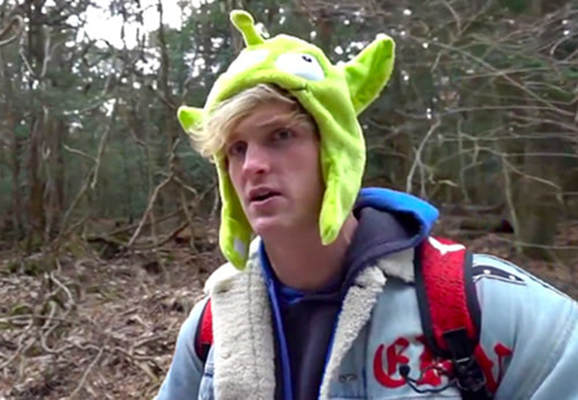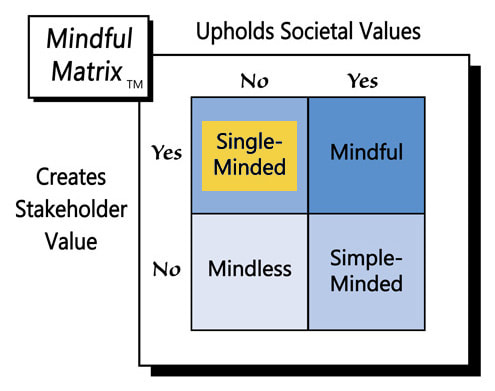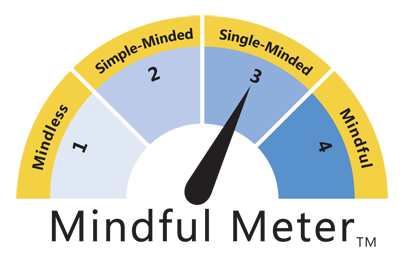Paul started posting videos to YouTube at age ten and became famous through the internet video sharing service Vine. By 2014, he had more than 3.1 million social media followers, which led him to leave Ohio State University and pursue an entertainment career in Los Angeles. His ‘edgy’ YouTube channel now has over 15 million subscribers, including many teens, who Paul refers to as his “Logang.”
Paul is more than just a hugely popular YouTube star, however. He has appeared in TV shows including Law & Order and Weird Loners, starred in The Thinning, a YouTube Red movie, and written a screenplay for an adult comedy called Airplane Mode. He also has a clothing line called “Maverick,” the name of which closely captures Paul’s brand of irreverent humor and moral indifference.
A few weeks ago, Paul was in Japan, trying to stir up some interesting content for his vlog. One day he and his companions hiked into Aokigahara, a 12-square mile tract of woods near Mt. Fuji that is commonly known as “Japan’s suicide forest,” as it unfortunately has become one of the most popular places in the world for people to go to take their own life. Signs in the forest even urge those contemplating suicide to consider their families and to seek professional counsel.
Given that Paul’s vlogs typically involve human interaction with unsuspecting participants, it’s odd that the group would film in an uninhabited forest, but the encounter that ensued probably explains the choice: Paul and his companions came across the body of a man who had hanged himself from a tree.
It’s difficult for most of us to know how we would respond to such a discovery; however, Paul’s reaction was not one that most people found acceptable. With little appreciation for the situation’s gravity, the crew filmed the victim close-up, only blurring his face. What’s more, “Paul is even seen laughing and cracking jokes about the deceased man." For instance, when one of the crew members acted squeamish, Paul quipped: “You never stand next to a dead guy?"
On December 31, he posted the video to YouTube and titled it “We found a dead body in the Japanese Suicide Forest.” Public criticism was swift and severe. Paul’s initial response to the backlash was to claim he was trying to help: “I intended to raise awareness for suicide and suicide prevention.”
Most people, however, didn’t buy his defense. So, less than 24 hours after posting the “suicide” video, Paul took it down. He has since offered a 1:45 minute apology titled “So Sorry” in which he appears much more contrite. After expressing special remorse for the victim and his family, he offers:
“I’ve made a huge mistake. I don’t expect to be forgiven. I’m just here to apologize. I’m ashamed of myself. I’m disappointed in myself, and I promise to be better. I will be better.”
Despite the ‘mea culpa,’ Paul has continued to experience backlash for his actions, including severe media criticism and a threatened lawsuit from Maverick Apparel, which claims mistaken consumer associations with Paul’s ‘Maverick’ brand have already cost the company $4 million. Even more devastating, YouTube has dropped Paul from its Google Preferred Program, meaning that while he can still post to the platform, his videos will no longer be marked for advertisers as high-quality content.
Popular opinion is that Paul has gotten what he deserves for making light of a problem as serious as suicide, for disrespecting an individual who took his own life, and for adding to the hurt of the victim’s family. While that public censure is good, it begs the question: Why aren’t people equally offended by Paul’s continual abuse of the living?
If you’re familiar with the vlogger’s work, you probably already know what I mean. If not, just peruse his YouTube channel. Or, the rest of Paul’s visit in Japan provides many specific examples. For instance, when he first arrived in Tokyo, he stuck his head out the window of a black limousine and shouted to anyone who might hear, “Hello, everybody. I’m just a blond white boy from Ohio here to cause trouble in your country.”
Paul then proceeded to buy a dead fish and a squid tentacle at a fish market, which he waived in the faces of by-passers and plastered against the outside of a restaurant window. He eventual abandoned the foul items atop the trunk of a taxi as it drove away.
Or, to see a broader sample of Paul’s irreverent acts, checkout his 2017 year-in-review video. In this retrospective, Paul cites many of his most notable ‘accomplishments’ of the past year, for instance:
- Shipped roommate Evan to Paris in a bag
- Officiated a wedding (Does he have credentials for doing so?)
- Faked his own death
- Had the Secret Service arrest his brother Jake
- Filled his brother’s pool with slime
- Got arrested by Italian police
- Use a crane to take a ride down his new street
- Surfed down the street on a Christmas tree
In addition, Paul is no stranger to sexually explicit content. One of his video posts titled “Stole My Brother’s Girlfriend” begins with him getting kicked out of a retail store because he “got naked” in one of the aisles and ends with a young female companion sporting a scarf made of condom packs. Paul also produced and starred in a music video called “No Handlebars” that featured the lyrics “I’ve been cyclin’ on your chick” and the refrain “I can ride your girl with no handlebars."
Logan Paul has said his goal is to become “the biggest entertainer on the planet.” It’s unfortunate that he’s chosen to pursue that goal at the expense of others’ dignity. Yes, deriding a suicide victim was abhorrent, but so are many of the other things he does like objectifying women and crudely treating people as means to more YouTube views. Paul is a talented young man with considerable potential, but unless he completely recreates his ‘product’ and treats both the dead and the living with respect, he will always be guilty of “Single-Minded Marketing.”
Learn more about the Mindful Matrix and Mindful Meter.
Check out Mindful Marketing Ads and Vote your Mind!




 RSS Feed
RSS Feed